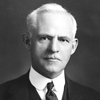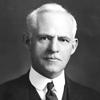Physical Cleveland
Enhancement of the Built Environment
Playhouse Square. The Rock and Roll Hall of Fame and Museum. The Health Tech Corridor in midtown Cleveland. The revitalization of the Gordon Square neighborhood on the city’s near west side. MOCA Cleveland’s gleaming gallery space in University Circle. These are some of the signature developments that have enhanced the built environment of Cleveland in recent years. As one would expect, the city’s largest grantmaker has helped to underwrite each of these high-profile projects. What may not be fully appreciated: how many other important but perhaps less celebrated bricks-and-mortar projects have received Cleveland Foundation support. More than 1,000 separate capital grants have been awarded since the mid-1950s.

The commitment to be a responsive capital provider was made at that time because America’s system of higher education, already crowded and underfinanced, faced what the Cleveland Foundation deemed to be a serious crisis. How would the skyrocketing number of students who were seeking (often with the assistance of the GI Bill) a college education be accommodated? To meet their share of this responsibility, colleges and universities across Greater Cleveland were planning desperately needed expansions of their facilities. The Cleveland Foundation did not customarily devote a major portion of its income to capital fund drives. However, the board recognized the urgency and importance of meeting the growing demand for higher education and workforce preparation. In 1956, it approved grants totaling more than $200,000, or about $1.7 million in today’s dollars, to help underwrite capital improvement projects at Baldwin Wallace College, Case Institute of Technology, Fenn College, John Carroll University and Western Reserve University. With this change in policy, the foundation once again demonstrated its ability to be flexible in addressing unforeseen new challenges.
Hospitals were the next institutions to initiate building programs. The baby boom and, later on, the establishment of Medicare and Medicaid triggered the requirement for additional healthcare facilities. Again, the board of the Cleveland Foundation felt compelled to help underwrite new hospital construction, additions or renovations. During the expansionary period between 1957 and 1972, the foundation stepped forward with a new round of capital grants whose hospital recipients included Deaconess, Euclid-Glenville, Forest City, Hillcrest, Huron Road, Ingleside, Lakewood, Lutheran, Marymount, Mt. Sinai, Parma Community, Rainbow Babies and Children’s, St. Luke’s, Southeast Polyclinic and University Hospitals of Cleveland.
By the 1980s, requests for assistance in upgrading every element of Cleveland’s civic infrastructure and building new physical assets had outstripped the foundation’s resources. To enable the board to prioritize requests, the program staff developed clear guidelines for capital grants. Chief among the requirements: Grantees must be financially stable and able to absorb increased maintenance and utility costs, and the project must be central to the grantee’s mission and help to meet a compelling community need. A new requirement was added in 2007 with the goal of making Cleveland a more environmentally conscious community. Henceforth, capital grants would be awarded only to projects that had adopted “green building” principles and qualified for the U.S. Green Building Council’s “LEED Silver” certification, in the case of new construction. Expansions or renovations of existing buildings must be “LEED-certified.”
The capital grants awarded by the Cleveland Foundation since 1956 exceed more than $150 million (in absolute dollars). After factoring in inflation, the present-day value of these awards would be many times greater. Even that sum would not adequately convey the impact on Greater Cleveland’s appearance, functionality and physical amenities of the capital improvements that the foundation has helped to underwrite. To give a clearer sense of the foundation’s supportive role, one or more representative capital grants awarded in every year since 1956 are listed here.
1950s
1956
- Cleveland Institute of Art, new building, $25,000
- Jewish Community Center of Cleveland, new building, $25,000
1957
- Cleveland Museum of Natural History, new library, $7,500
1958
- Cleveland Music School Settlement, new west-side branch, $3,678
1959
- Cleveland Institute of Music, new building, $30,000
1960s
1960
- Hiram House, camp building program, $20,000
1961
- Benjamin Rose Institute, new nursing home, $10,000
1962
- Salvation Army, new emergency shelter, $50,000
1963
- YMCA, building program, $51,820
1964
- Garden Center of Greater Cleveland, new building, $25,000
1965
- Vocational Guidance and Rehabilitation Services, building program, $50,000
- Dobama Theatre, renovation, $2,000
- City Mission, building program, $5,000
1966
- Baldwin Wallace College, administration building construction, $50,000
- Baycrafters, building renovation, $10,000
1967
- Blossom Music Center, building program, $160,000
- Eliza Jennings Home, expansion program, $25,000
1968
- Holden Arboretum, capital improvements, $20,000
- Karamu House, capital improvements, $15,000
1969
- Lakeland Community College, building program, $50,000
1970s
1970
- Juvenile Court of Cleveland, suburban branch office, $13,450
1971
- National Council of Jewish Women, headquarters renovation, $31,833
1972
- Huron Road Mall, downtown construction, $40,000
1973
- Severance Hall, renovation, $41,191
1974
- Rainey Institute, building repair, $3,000
1975
- Kenneth C. Beck Center for the Cultural Arts, new building, $100,000
- Garden Club of Cleveland, Public Square renovation, $100,000
1976
- Western Reserve Historical Society, new library and expansion of exhibit space, $150,000
- Cleveland Play House, architectural planning for new theater and clubhouse, $50,000
- Sokol Hall, restoration, $17,671
1977
- Cleveland State University, Cleveland Marshall College of Law library, $50,000
1978
- Case Western Reserve University, School of Applied Social Sciences, renovation, $100,000
1979
- Women’s City Club of Cleveland, Cuyahoga River waterfront improvement, $20,000
1980s
1980
- Justice Center Art Advisory Committee, George Segal sculpture, $15,000
1981
- Eliza Bryant Center, nursing facility planning and construction, $750,000
- Jewish Community Federation of Cleveland, Heights area renovation project, $40,000
- Convention and Visitors Bureau of Greater Cleveland, Terminal Tower information center, $25,000
1982
- Cleveland Institute of Art, renovation of the Factory building, $300,000
- The Temple, major repairs of national landmark building, $53,000
- Ruffing Montessori School, building program, $50,000
1983
- WCPN, start-up capital and operating support, $300,000
- Food Communities Organization of People, new Food Co-op facility, $50,000
- Viaduct View, Inc., construction of pedestrian mall on Old Superior Viaduct, $15,000
1984
- Boys and Girls Clubs of Cleveland, capital and operating support for new west-side facility, $175,000
- Cleveland Department of Parks, Recreation and Properties, city greenhouse renovation, $2,000
1985
- Cleveland Play House, “Finish the Theatre Campaign,” $250,000
- Cleveland State University, Howe Mansion restoration, $50,000
- Dial Industries, new handicapped training and employment center, $21,100
1986
- Rock and Roll Hall of Fame and Museum, facility planning, $50,000
- Cleveland Beautiful Committee, Mall A renovation, $50,000
- Cain Park, master redevelopment plan, $48,250
1987
- Health Hill Hospital for Children, new inpatient units, $35,000
1988
- Cleveland Small Business Incubator, building renovations, $80,000
1989
- Planned Parenthood of Greater Cleveland, headquarters renovation, $50,000
1990s
1990
- Fairhill Center for Aging, adult daycare facility renovation, $150,000
1991
- Hathaway Brown School, capital improvements, $25,000
1992
- Neighborhood Family Practice, renovations, $11,167
1993
- Hospice of the Western Reserve, residential facility, $25,000
1994
- Great Lakes Science Museum, design development and capital campaign, $250,000
- Visiting Nurse Association of Cleveland, capital campaign, $35,000
- United Way Services, new building, $30,000
1995
- CLEAN-LAND, OHIO, Trees for Tomorrow program, $7,000
1996
- Old Stone Church, cleaning and renovation, $10,000
- Dunham Tavern Museum, education center, $5,000
1997
- Cleveland Clinic Foundation, research and education institutes, $450,000
- Case Western Reserve University, Veale Convocation Center, $100,000
- Broadway Area Housing Coalition, Mill Creek community center and pool, $7,500
1998
- Cuyahoga Valley Scenic Railroad, railroad car refurbishment, $10,000
- Cornucopia, Inc., Nature’s Bin store renovations, $5,000
1999
- Western Reserve Historical Society, Euclid Beach carousel restoration, $200,000
- Cleveland Opera, titling equipment and screens, $16,900
- Chagrin River Land Conservancy, land protection fund, $15,000
2000s
 2003: Hanna Perkins Center for Child Development
2003: Hanna Perkins Center for Child Development 2005: ideastream
2005: ideastream 2001: Cleveland Botanical Garden
2001: Cleveland Botanical Garden 2004: Cleveland Museum of Art
2004: Cleveland Museum of Art 2004: The Gathering Place
2004: The Gathering Place 2002: Shaker Lakes Regional Nature Center
2002: Shaker Lakes Regional Nature Center 2006: MOCA Cleveland
2006: MOCA Cleveland 2002: Cleveland Institute of Music
2002: Cleveland Institute of Music 2000: Therapeutic Riding Center
2000: Therapeutic Riding Center 2000: Cleveland Zoological Society
2000: Cleveland Zoological Society 2006: Cleveland Clinic Foundation
2006: Cleveland Clinic Foundation 2007: Great Lakes Theater Festival
2007: Great Lakes Theater Festival 2009: Cleveland Institute of Art
2009: Cleveland Institute of Art2000
- Cleveland Zoological Society, Center for Zoological Medicine, $1,500,000
- Therapeutic Riding Center, Inc., capital improvements, $50,000
- Applewood Centers Inc., independent living facility, $25,000
2001
- Cleveland Botanical Garden, conservatory, $300,000
2002
- Cleveland Institute of Music, renovation and expansion, $300,000
- Goodrich-Gannett Neighborhood Center, purchase of Hofbrau Haus, $100,000
- Shaker Lakes Regional Nature Center, renovations, $5,000
2003
- Fine Arts Garden Commission, renovation, $100,000
- Hanna Perkins Center for Child Development, Malvern School renovation, $30,000
2004
- Cleveland Museum of Art, renovation and expansion, $2,000,000
- East Cleveland Public Library, capital campaign, $35,000
- The Gathering Place, healing garden, $10,000
2005
- ideastream, One Playhouse Square renovation, $125,000
2006
- MOCA Cleveland, new building, $1,000,000
- Cleveland Clinic Foundation, heart and vascular institute, $500,000
- Domestic Violence Center, shelter renovation, $85,000
2007
- Great Lakes Theater Festival, Hanna Theatre renovation, $750,000
2008
- Cleveland Metropolitan School District, MC2-STEM High School, $750,000
- Cleveland Rape Crisis Center, capital needs, $10,000
2009
- Cleveland Institute of Art, capital campaign, $50,000
2010s
2010
- Case Western Reserve University, The Temple's renovation as a performing arts center, $1,000,000
- Hawken School, University Circle extension campus, $50,000
2011
- LAND Studio, public and green space creation, $325,000
- Greater Cleveland Regional Transit Authority, redevelopment of three University Circle stations, $175,000
2012
- MidTown Cleveland, Health-Tech Corridor creation and administration, $200,000
2013
- Friends of the Cleveland School of the Arts, design development for new school building, $75,000

